When you or your clients are considering media concealment, such as TV lifts or placing TVs behind scrolled art, there are many things they need to take into consideration.
The most important is “efficiency of the design" which includes
- Compactness of the product vs. quality
- Capacity vs. weight vs. smoothness
- Quietness vs. eye-appeal vs. cost.
Those considerations must be weighted when considering the specific application of the product, like in homes, motorhomes or yachts. All of these factors builds the “balance” of product design. There are some applications, like waterproof outdoor TV lifts, where the application complicates things, but all the factors must still be considered.
Compactness
If your project doesn't allow for a lot of room, be sure to look for solutions that are uniquely designed for tight spaces.
Space is always valuable, whether it’s in a cabinet that shares the space with other objects, or where there might be very limited space available. That is why compactness of the design is important. In a cabinet, the importance could be either a width, height or a depth limitation, or sometimes all of them. One way to solve tight applications, like in-ceiling fold-up lifts that only allow 3- to 4-inches of overhead depth, is to look for modular units that allow you to change out components based on space limitations.
Quality and Capacity
Lifts should be made from quality materials such as aluminum and stainless steel and have the capacity to perform the required lifting task, including any variations that might be encountered. Further, there should not be too much more capacity in what the lift can provide than what is necessary. Excess capacity requires more electrical power and larger-than-needed motors that, as such, will not be as quiet as one of the appropriate size.
Another capacity issue involves designing products for specific industries. Motivated Design has products specific for the marine and motorcoach industries where quality materials are of even more importance and extra-rugged design comes into play. Yachts can subject TV Lifts or other concealment devices to extreme conditions, as in sport fishing yachts that can power through 8-foot seas at speeds greater than 40 knots.
Weight
The weight of a TV lift and other concealment products is perhaps one of the key design components that is very overlooked, yet important to understand.
There are some lifts that weigh several hundred pounds, yet are only lifting a 45-pound TV.
Weight complicates a design when the actual lifting assembly is excessively heavy. This weight adds to the total weight that must be moved along with the TV or device that is being lifted. As a result, the device needs more power to lift, requiring a larger and noisier motor. This is why use of aluminum materials, which are much stronger for their weight, is something to look for wherever possible.
Secondly, and probably more importantly, any additional weight needlessly built into a product increases the danger from an overhead installation. Also, when heavy products are used in mobile applications, every pound of needless weight causes a yacht or motorcoach designer to compromise by having to remove weight from other aesthetic finishes like marble or granite trims, or regretfully from some other desired device or component. Often times the additional weight isn’t noticed until a cabinet with an overweight lift needs to be carried up a flight of stairs. Cabinet shops will hate you for this.
Thirdly, any excess weight needs to be shipped, and that costs money both on incoming and on outgoing freight.
Smoothness, Quietness of Operation
A product where all of its components fit together with preciseness and close fit will not have issues such as lack of smooth operation, and will, as a result, also operate quietly.
Eye Appeal
One of the most important features of any media concealment device is aesthetics. No, the lift itself does not have to look especially attractive, but it should not look like an unprofessionally-built product. There should not be exposed parts of the lift - it should have a clean look. The concealment devices themselves should remain concealed, and only the TVs or media devices, along with whatever architectural finishes, should be seen. This often requires cooperation on the part of the interior designers, cabinet shops, millwork finishers, etc. A well-designed finished product should look good from any angle of view, and not just the media side.
Cost
Cost effectiveness is simply paying an honest price for all of the above.
Do you have questions or comments - get in touch and we'll be happy to discuss more.
PS - We tweet things about home automation and TV lifts so you should follow us on Twitter.

